Water resource is being categorised as a renewable energy source, which means, natural water resources can be easily replenished back to nature. But it is rightly said that overdo of anything is bad; the pace with which natural ground water is being used, or rather exploited, it is not returned to the ground with concurrent pace. This results in depleted groundwater beds which brings havoc at the time of drought and increased irrigation demands.
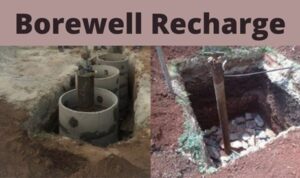
India’s economy vastly depends upon agriculture. Farmers work for fulfilling the food demands of the population of India along with exporting surplus to the world market. To meet the increasing demand for irrigation and drinking purpose, the bore wells are dug with high grade PVC pipes that reach the aquifer where groundwater can be extracted.
Large number of bore wells is an issue
The bore wells are recklessly drawing water from below the ground. Rainwater is the only option available for reviving the depleted ground water but this natural process of rainwater seeping under the ground through fixtures and cracks is a very slow process. Research shows that only 5–10% of seasonal rainfall infiltrates into groundwater in the hard-rock regions. Also, in case of scarce rainfall, there isn’t enough water being renewed underground. Water and environmental conservationists brainstormed and came to the solution called Bore well recharge. The idea was simple; develop and employ the methods to store rainwater and then channelize the stored surface water directly towards the aquifer using borewells.
Recharging the Bore well
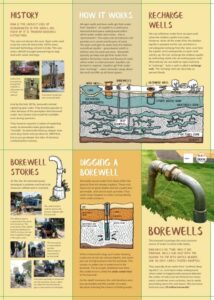
Bore well recharging technically focuses on the use of harvested surface water (obtained via rainfall or nearby water bodies) where runoff water begins to pass through a natural filter made up of large and small stones. Then, there is another layer of sand through which water passes and finally, it perforates in the bore well pipe via a fine mesh which is wrapped around the drilled casing pipe. The fine mesh ensures the removal of big and tiny impurities before the water enters the bore well.
There are two bore well recharge methods being employed by farmers across India :
Direct Recharge –
Roof Rainwater -
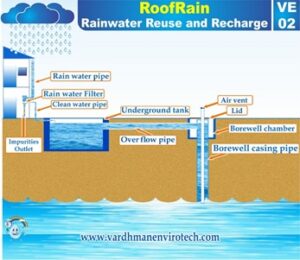
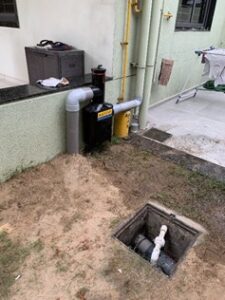
Surface Rainwater
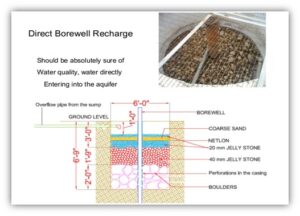
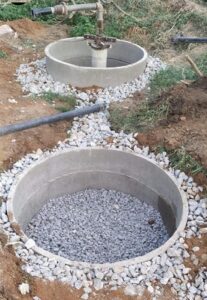
In the direct recharge method, a
- Percolation pit, usually 10×10 feet, is dug around the tubewell’s casing pipe.
- This casing pipe is then perforated with a drill machine and the holes are covered by a nylon mesh. The mesh ensures nothing, but the water goes across the borewell.
- Now the pre-casted RCC (Cement) rings are placed around the bore well casing through which the harvested water would seep to reach the nylon mesh of casing pipe and proliferates into it through its holes.
- The empty area between the walls of well and rings is then filled with filtering materials like sand, gravel, crushed stone, jelly and such others.
- The rain water from adjacent water body such as a catchment pond is diverted into this well, it gets filtered and then continue to seep into the casing pipe, thus refilling the bore well.
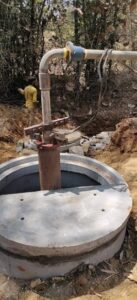
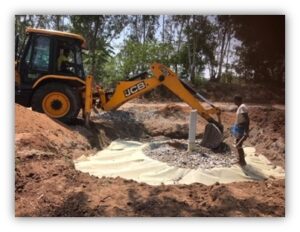
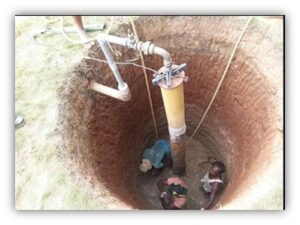
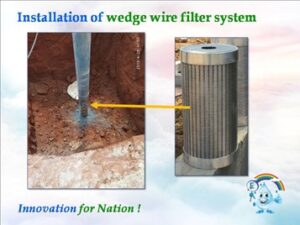
Direct Bore well recharge is recommended only if the bore well has run dried or is yielding a negligible amount of water. Even a running bore well can practice direct recharging in case of surplus surface water which otherwise would go down the drains and get wasted. Though letting unfiltered surface water to seep into the ground is highly discouraged as this may contaminate the ground water or clog the aquifer with impurities such as toxic minerals like fluoride and industrial chemical waste.
Indirect Recharge –
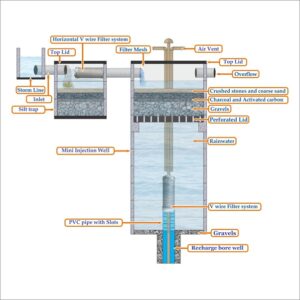
Indirect method of bore well recharge includes the following,
- Instead of digging the pit around the casing pipe, it is dug within a 20 feet radius, maintaining a minimum distance of 3 ft between the recharge well and the bore well.
- Just like the direct bore well recharge method, the casing pipe too has holes covered with nylon mesh and the well is filled with filtering materials for water to seep in while leaving chunked impurities at bay.
- Here, in indirect bore well recharge, the water flows through the ground, reaches the pipe and then seeps in though nylon mesh and casing pipe holes.
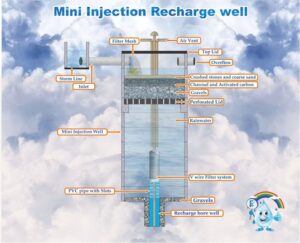
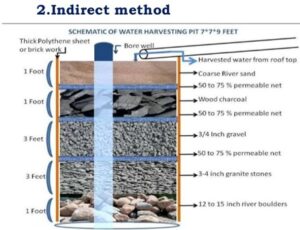
- Indirect recharging works best for well-functioning bore wells which haven’t gone dry yet. This is to ensure continuous availability of the surface water in case of dry seasons of the year.
Why Direct Bore well Recharge is advocated?
The sophistication process of direct bore well recharging method has led to the availability of desired quality of ground water which is fit for irrigation as well as drinking. The advantageous implications of this method are listed as under:
- There is a well amounted reserve of water for urgent need during highly dry times of the season. Even the most dried up borewells can be filled up using this method.
- This simple mechanism of filtering surface water and pushing it into the ground is easy to understand by general population.
- It is environment-friendly if carried out with care.
- Harvesting rainwater which is a pure form of water can lead to sustainable output of an aquifer with lesser impurities being reaching the ground water level.
- This method prevents adverse social impacts like displacement of population or loss of agricultural land.
- As compared to other methods of storing surface water, this method minimizes the amount of water loss due to evaporation, thanks to its close knitted design for collecting and transporting water to the borewell.
Before you take on Bore well recharge
Bore well recharging undoubtedly is one of the best initiatives of 20th century. In order to extract 100% benefits of this process, certain pre-recharging research becomes inevitable
1. Aquifer Management
Some public initiatives of recharging the bore wells goes ineffective due to lack of scientific understanding of groundwater. Before putting up with this process, one must have appropriate knowledge of the potential of their groundwater aquifer.
An approach called Aquifer mapping is a scientific method determining the quantity and quality of groundwater in a particular area. Aquifer mapping can help in
- Deciding the depth of recharge wells that can provide maximum recharge and maximum utilization of harvested water.
- Finding the recharge rate of an aquifer. This helps in deciding optimum number of recharge wells required for a given aquifer.
- locating the natural recharge and discharge areas
- Defining how much water can be extracted and for how long.
- Scientific filtration before recharge
2. Stream Pollution
Due to unchecked effluents from urban and industrial areas, stream pollution has become a matter of high priority. Measures must be implemented to ensure that the harvested water which is used for recharging the borewells must be free from water pollutants, especially in case of using a direct bore well recharge method. This is necessary to take care so that groundwater does not pose any health and environmental risks to the population.
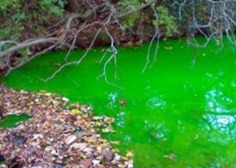
3. Local legal framework
One must read and understand the legal regulations laid by central or state authorities for the area where recharging is intended to be done. This prevents unnecessary chaos and wastage of resources due to non-agreement.
The benefits of bore well recharge technology; you must know:
Due to the extreme burrowing of new bore-wells and nonstop usage of existing ones, the level of ground water is exhausting ruthlessly and as a result, most of the bore wells have stopped working because of the dryness. It was bothering the agriculturists until technology proved its worth with an advancement named bore-well recharge technique. It is an innovative practice which involves refilling of ground tables with the rain water.
It is a great process which has solved the problem of dried bore wells in the agriculture lands and many agriculturists are enjoying its benefits.
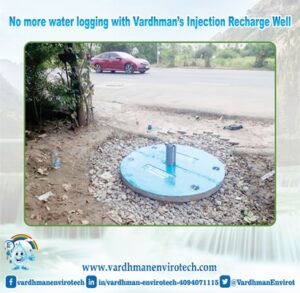
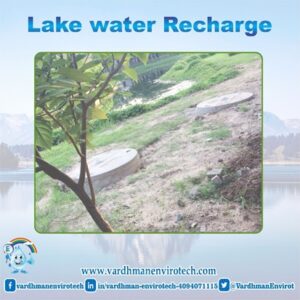
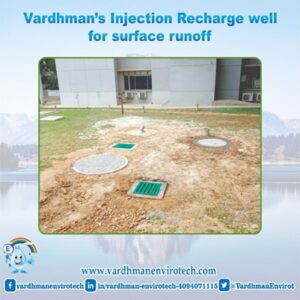
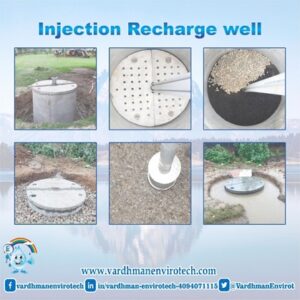
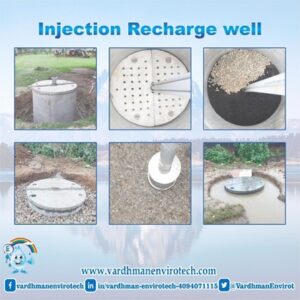
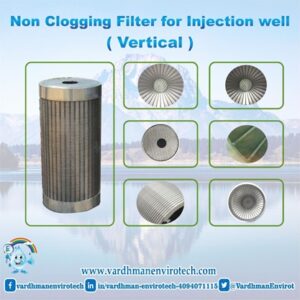
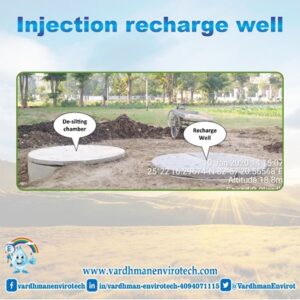
Below mentioned are few:
The level of water-output is improved:
When bore wells are recharged using the technology, the level of water gets increased. It works even for the completely dried up bore wells if proper management is done while harvesting the rain water. It is a fully tested mechanism that involves simple steps.
Quality of water is enhanced:
Using naturally filtered rain water results in the naturally purifying the water collected in the ground water tables. The impurities, hardness and presence of toxic substances including fluorides are reduced with time. So, the quality of water is enhanced.
Affordable product:
As compared to the other solutions of water harvesting, bore well recharge technique is cheap and affordable. To set up a bore well recharge, it requires natural materials available locally and hence it can be done at a very low cost.
Permanent solution:
When a bore well is recharged, it will never dry up. With each year of usage the underground water tables will refill themselves with the rain water and the bore well will be up and working permanently.
You can customize it:
The bore well recharge technique is fully customizable according to the land of the farm and site. Be it a farmhouse or factory or educational institute, it is possible to refill any bore well of urban as well as rural area.
Eco-Friendly option:
When you opt for the bore well recharge technique, you opt for an Eco-friendly option for meeting your water requirements. You not only resolve your water-scarcity problem but secure an Eco Friendly option for the future generation.
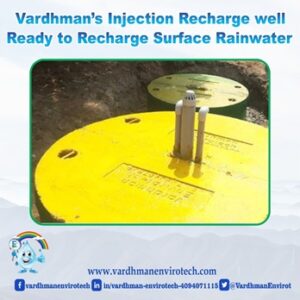

Stop water from going into the drain,
Make a collective effort & catch the rain!
Vardhman Envirotech…
India's Passionate Rainwater Company.
